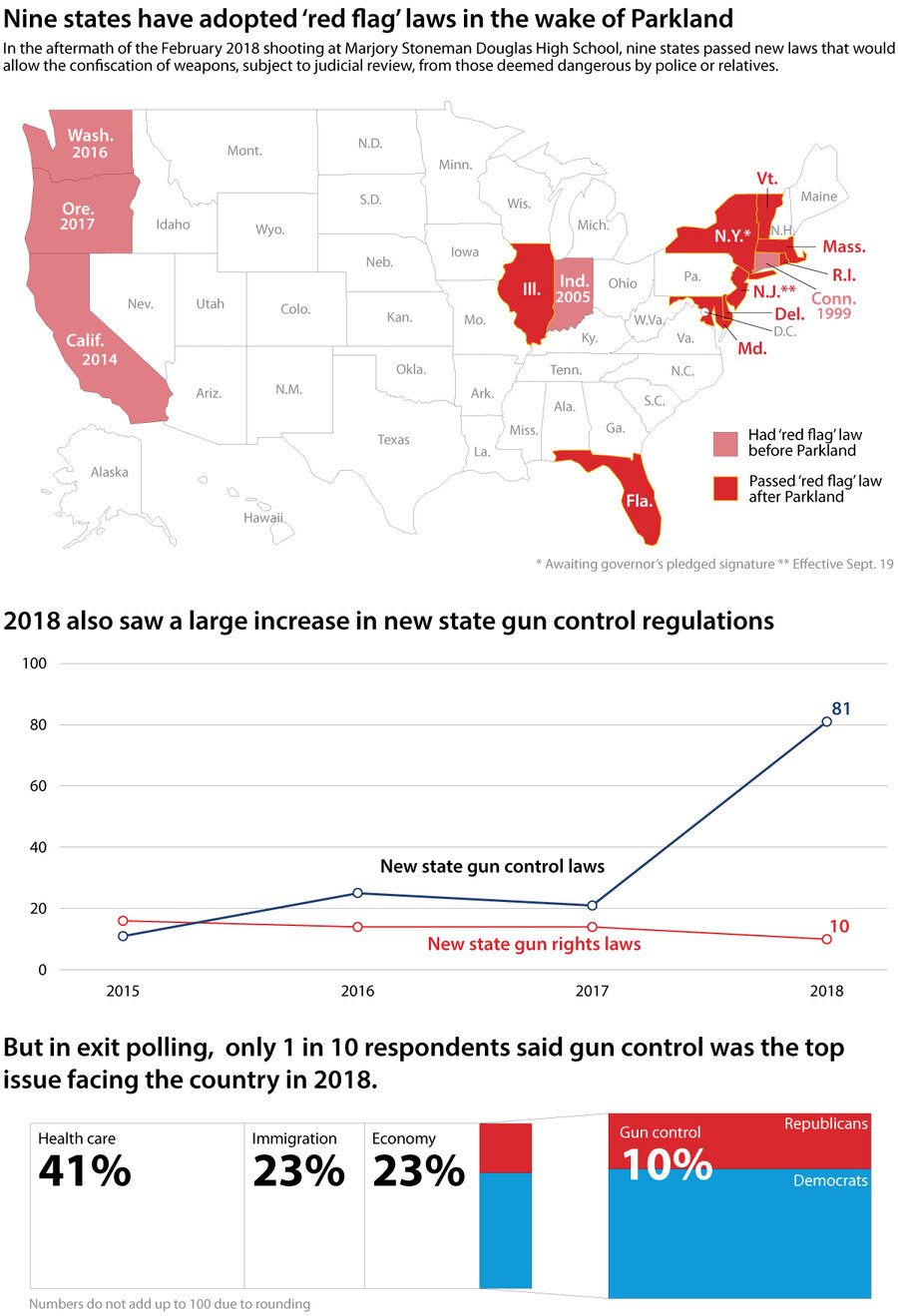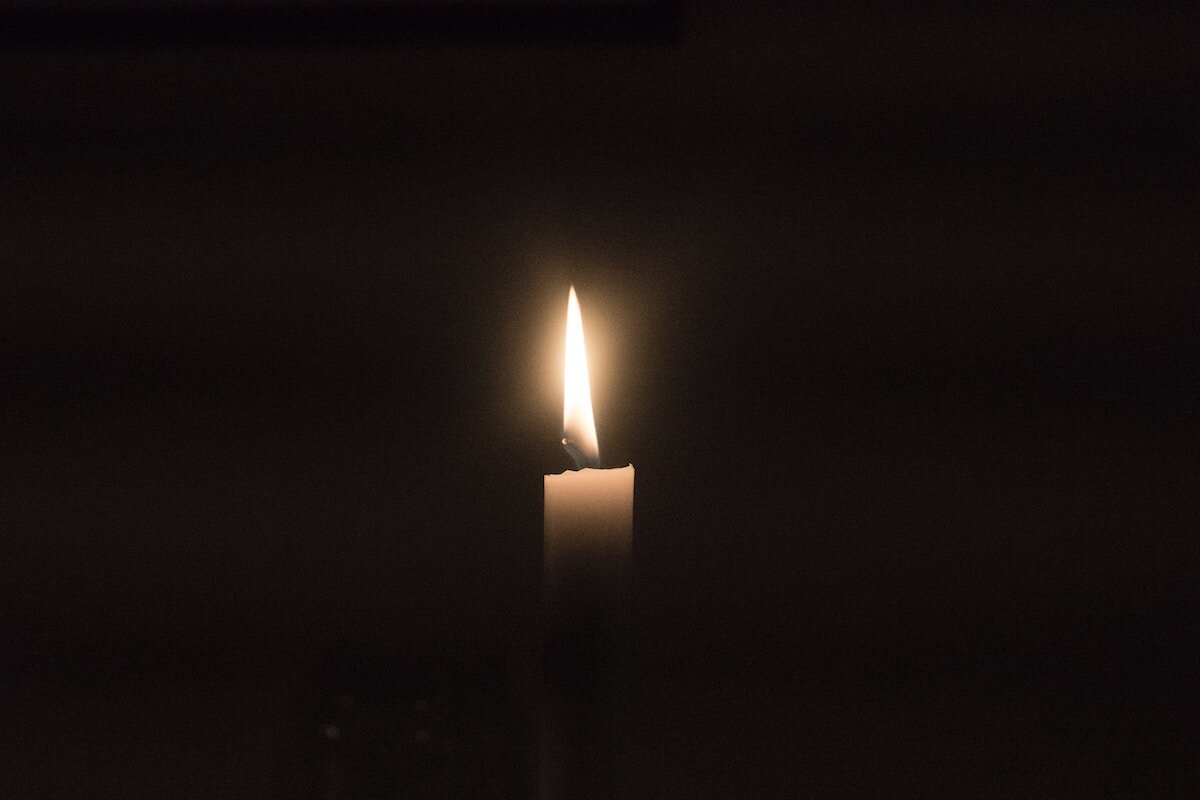- Quick Read
- Deep Read ( 4 Min. )

Why is Christian Science in our name?
Our name is about honesty. The Monitor is owned by The Christian Science Church, and we’ve always been transparent about that.
The Church publishes the Monitor because it sees good journalism as vital to progress in the world. Since 1908, we’ve aimed “to injure no man, but to bless all mankind,” as our founder, Mary Baker Eddy, put it.
Here, you’ll find award-winning journalism not driven by commercial influences – a news organization that takes seriously its mission to uplift the world by seeking solutions and finding reasons for credible hope.
Explore values journalism About usIn Today’s Issue
Monitor Daily Podcast
- Follow us:
- Apple Podcasts
- Spotify
- RSS Feed
- Download
TODAY’S INTRO
On Valentine’s Day, two stories with heart
 Yvonne Zipp
Yvonne Zipp
Today, we bring you two stories with heart – one from the pews and one from the stands.
The Alfred Street Baptist Church in Alexandria, Va., went on a churchwide fast in January – not indulging in alcohol, sweets, social media, or “frivolous purchases.” Then they donated the money they saved: $150,000.
They used $100,000 to wipe out the outstanding debts of 34 college students at Howard University. Mya Thompson was one of those students. The mom, who works at a 911 call center in D.C., is on track to graduate this spring. The church paid the final $2,500 in tuition she needs to get her diploma.
Parishioners wanted students to feel supported by their community and “just never to give up hope,” a pastor told NPR.
Speaking of never giving up, at a high school basketball game Friday night, the teenage announcer sounded as excited as if the star player were coming onto the court: “Clay Warner, the heart and soul of North Polk, is coming into the game!”
Clay, a legally blind high school senior who was diagnosed with cerebral palsy at birth, loves basketball “more than anyone I’ve ever met,” his coach told The Washington Post. Clay also has a work ethic that never flags and a belief in his team that never falters. Before Friday night, he had never played one minute in a game.
It only took a minute for Clay to sink a shot using the rim of his glasses to aim.
His teammates, the opposing team, and the stands erupted. “This whole gym was yelling my name,” he told WHO-TV. “Everything, both benches were jumping.... It was like I was a little kid again.”
Now for our five stories of the day.
Share this article
Link copied.

Help fund Monitor journalism for $11/ month
Already a subscriber? Login

Monitor journalism changes lives because we open that too-small box that most people think they live in. We believe news can and should expand a sense of identity and possibility beyond narrow conventional expectations.
Our work isn't possible without your support.
For many Americans, the Trump ‘tax cut’ doesn’t feel like a boost
President Barack Obama’s signature domestic initiative, on health care, was marred by a glitch-prone rollout. Is President Trump’s tax-cut law hitting comparable bumps now, in its first tax-filing season?

Historically, cutting voters’ taxes is often a political winner. President Trump has been fighting an uphill battle on this front though. Partly that’s because of dueling political views. But another reason is coming into play as Americans start filing their first tax returns under his 2017 law: Many people aren’t even feeling a pocketbook benefit. Refunds are often smaller, or people are being hit with a surprise payment they owe instead.
What’s going on is that people often got their tax cut throughout 2018 in the form of less money being withheld from their paychecks. But if their withholding fell too much, they now owe a payment.
Then there are taxpayers frustrated by the altered format – or ones whose taxes really have gone higher. “We’re paying more this year, even though the standard deduction is higher,” says Mary Tom Brownell, a retired educator in Colorado. Says tax adviser Tim Barry in Massachusetts: “You always have the theoretical part of the law and then it’s different when you actually have to put pen to paper."
For many Americans, the Trump ‘tax cut’ doesn’t feel like a boost
Touting his tax cuts in West Virginia last April, President Trump promised: “This will be the last time – April – that you’re going to [fill out] that old-fashioned, big, lots of pages, complicated tax form. Because next April you’re going to, in many cases, [file] one page, one card. It’s going to be very, very different.”
Mr. Trump, meet Greg Palmer, a Seattle-based fundraiser for nonprofits who would naturally be attracted by tax simplification. He’s one of an estimated 3 percent of filers who does his taxes himself – and by hand.
“The redesign was not intuitive,” Mr. Palmer writes in an email. “Lots of jumping back and forth on each line item. A terrible idea, just to make the form ‘shorter.’ ”
But surely people with simple returns – only salary income and no deductions – will save time filling out the shorter form?
Not exactly, says Lynn Ebel, director of The Tax Institute at H&R Block. People still have to go through the same question-and-answer format to figure out if they have to fill out any of six new supplemental 1040 schedules, not to mention the standard schedules A, B. and so on.
Although their signature tax cuts were never the political home run they expected, Republicans had made progress last year narrowing the law’s popularity gap. But as the income tax-filing season gets under way this year, those gains are now threatened. In a bizarre twist, a tax reform that does save money for most Americans is earning negative reviews as the experience of filing returns doesn’t live up to the hype that was used to sell the tax package to the public.
“You always have the theoretical part of the law and then it’s different when you actually have to put pen to paper and prepare somebody’s tax return,” says Tim Barry, a partner at Blumshapiro, a tax and accounting firm based in West Hartford, Conn. “If you talk to any tax professional, they’ll tell you that this is going to be a very trying tax year.”
Even some Trump supporters are angry.
“My income is the same, but this year I went from a $1,000 refund to a $2,000 owed!” tweets an angry Bennie, who calls himself a big Trump supporter.
It’s a common objection. Last year at this time, early filers due a refund were getting an average $2,035, according to the Internal Revenue Service. This year as of Feb. 1, they were only receiving $1,865, an 8.4 percent drop.
But it stems mostly from a misperception. H&R Block had noticed the confusion as early as this past November, when its survey showed that nearly half (47 percent) of Americans expected that tax cuts would mean they would get a bigger refund, says Ms. Ebel. But that’s not how it has worked out.
Many Americans already received the bulk of their tax cut last year, when the IRS withheld less money from their paychecks. So when wage earners prepare their taxes, they may find that their tax refund is smaller because less was withheld from their paycheck.
Then there are a whole class of people for whom federal taxes really did go up because the Trump tax law created a new set of winners and losers.
“We’re paying more this year, even though the standard deduction is higher,” says Mary Tom Brownell, a retired educator in Glenwood Springs, Colo., who is married and filing jointly. The reason: Even though the standard deduction doubled, many of the exemptions she and her husband could take last year were capped or eliminated this year.
“It was a bit of a shocker,” says Fred Telschow, manager of the media group at The First Church of Christ, Scientist, in Boston. (The church also publishes the Monitor.) His wife took a large pay cut to take a new job last year. “My income went down because of Meredith’s situation. [But] because we didn’t do as many deductions, I owed more in taxes.”
If he hadn’t bought an all-electric Tesla, which earned him a $7,500 federal credit, “I'd be cutting a check” to the government, he adds.
Meanwhile, some of the biggest beneficiaries and potential cheerleaders of tax cuts haven’t been able to file their taxes yet, because of IRS delays in issuing final rules.
For example: The agency only recently released final regulations for the qualified business income deduction, and tax preparers are still waiting for final regulations on an interest expense limitation. These regulations are key for so-called “pass-through” entities – business owners who file their business earnings through their personal return – who are likely to be big beneficiaries of the tax cuts.
“There’ll be more people who will have to file extensions this year to finish their returns,” says Mr. Barry of Blumshapiro.
Thus, the early narrative of the Trump tax cuts – much like that of Obamacare, where the online signup system famously crashed – is at risk of turning more negative.
The legislation was never very popular. Shortly before Congress passed the tax cuts, 56 percent of Americans disapproved while 29 percent approved, according to polling by Gallup. By last fall, however, the tax cuts had gained more support: only 46 percent disapproved; 39 percent approved.
Of course, perceptions of the tax cuts are heavily colored by politics. The same Gallup poll last fall found that 76 percent of Republicans approved of the tax package, while only 8 percent of Democrats and 34 percent of independents approved.
“The politics of this are so tainted for the two-thirds of the country that does not support this administration,” says Jeff Howard, who saw his tax refund shrink this year and who worked for Democrats in Washington, D.C., before taking a job at an education start-up in Denver. “This is going to be a very easy leap to scapegoat [Republicans for], why those refunds are less.”
“It's just one more piece to be frustrated about” with the administration, says Ms. Brownell, the retired educator, who did not vote for Trump in 2016. “It just adds fuel to the fire.”

One year after Parkland, what has – and hasn’t – changed
The earnest activism of the student survivors of last year’s Parkland, Fla., school shooting swayed a nation’s thinking about a generation and its conversation about guns. It helped shaped legislation, too.

- Quick Read
- Deep Read ( 2 Min. )
Charlton Heston once held a rifle over his head and declared the government would only pry it from his “cold, dead hands.”
It was an iconic defense of gun rights – the nearly uninhibited ability for law-abiding Americans to defend themselves.
Things have changed. A series of mass shootings – Las Vegas, Orlando, Sutherland Springs – has stymied a gun rights movement that had co-opted the language of civil rights. Since the shooting in Parkland, Fla., one year ago today, nine states (for a total of 14) have implemented “red flag” laws that allow temporary seizure of weapons for a range of reasons, from domestic battery to social media threats. Authorities carried out at least 1,700 such seizures last year.
Five of those bills were signed by Republican governors. Today, the number of Americans who live in states trending toward more gun control has risen to 140 million from about 112 million, according to rough estimates by Adam Winkler, author of “Gunfight: The Battle Over the Right to Bear Arms in America.”
To be sure, President Trump has installed two gun-rights-friendly Supreme Court justices. Their views will be tested in a gun rights case out of New York City this spring.
But the powerful appeals from Florida shooting survivors have led to what former Rep. Gabrielle Giffords, herself the survivor of a mass shooting, calls a “tectonic shift” for gun policy in the US.
One year after Parkland, what has – and hasn’t – changed
Charlton Heston once held a rifle over his head and declared the government would only pry it from his “cold, dead hands.”
It was an iconic defense of gun rights – the nearly uninhibited ability for law-abiding Americans to defend themselves.
Things have changed. A series of mass shootings – Las Vegas, Orlando, Sutherland Springs – has stymied a gun rights movement that had co-opted the language of civil rights.
Since the shooting in Parkland, Fla., one year ago today, nine states (for a total of 14) have implemented “red flag” laws that allow temporary seizure of weapons for a range of reasons, from domestic battery to social media threats. Authorities carried out at least 1,700 such seizures last year.
Five of those bills were signed by Republican governors. Today, the number of Americans who live in states trending toward more gun control has risen to 140 million from about 112 million, according to rough estimates by Adam Winkler, author of “Gunfight: The Battle Over the Right to Bear Arms in America.”
“We don’t have tens of thousands of people being rousted in the middle of the night by the police [to take their guns] and at the same time there's less patience with the endlessly gloom and doom predictions of the gun rights people that any regulation can result in gun bans and average people having ... their rights endangered,” says Robert Spitzer, author of “The Politics of Gun Control.” “That rhetoric gets dulling and not very effective after a while.”
To be sure, President Trump has installed two gun-rights-friendly Supreme Court justices. Their views will be tested in a gun rights case out of New York City this spring.
But the powerful appeals from Florida shooting survivors have led to what former Representative Gabrielle Giffords, herself the survivor of a mass shooting, calls a “tectonic shift” for gun policy in the US. It comes as the NRA has struggled with financing and become embroiled in the investigation of Russian meddling in US political affairs.
These charts explore how the youth movement launched in the wake of the Parkland shooting has shifted political thinking and the calibrating of the Second Amendment with public safety.

Associated Press, CNN, Giffords Law Center

Associated Press, CNN, Giffords Law Center

Patterns
Adam Smith’s hidden hand of empathy
The "socialist" label has reentered US politics – and it tends to evoke radicalism. But across Western democracies, including the US, the debate around it is becoming decidedly more nuanced.

- Quick Read
- Deep Read ( 3 Min. )
Is the term “socialist” losing its sting in American politics? President Trump is targeting potential 2020 opponents with it. But across Western democracies, a search is under way for answers to a problem even mainstream politicians acknowledge: Free market capitalism has ceased to work as it used to. The core issue: the huge economic power of a few individuals and corporations, in contrast to the struggle of many others. From Italy to France to Britain, responses range from promises of a guaranteed income to help for working-class families and pensioners.
Adam Smith, whose 1776 "Wealth of Nations" is considered a founding text of capitalism, argued that an underlying strain of empathy would temper the market’s excesses. Over time, that’s been reflected in such provisions as antitrust and labor-union laws.
The latest stresses have been building since the 1970s, but the seismic jolt came with a truly global economy. Will the socialist tag conjure up visions of Soviet Communism in US voters’ minds? Perhaps. But a recent Fox News poll found even a majority of registered Republicans now favors higher taxes on the very rich.
Adam Smith’s hidden hand of empathy

The “s” word – socialism, that is – has returned to American politics, with President Trump signaling in his recent State of the Union address that he sees it as a key weapon against the growing list of Democratic Party candidates for the White House.
But while the label of “socialist” has long been seen as toxic in US politics, that could be changing. Some of Mr. Trump’s rivals are indeed advancing radical proposals for taxation and regulation on the very richest. Yet they’re part of a wider, growing trend affecting many Western democracies.
It’s not a drive for socialism in the classic definition of the term: replacing market economies with state ownership and control. It’s a search for answers to a problem even mainstream politicians increasingly acknowledge: Free market capitalism has ceased to work the way it used to, or ought to.
The policy debate differs from country to country. But the core issue is the same: the huge economic power residing in a very few individuals and corporations at the top, while others – not just at the bottom but also in the middle – struggle to get ahead of just stay even in a world economy that’s changing beyond recognition.
Until the market crash of 2008, the West’s governing consensus favored broadly business-friendly policies over explicit efforts to tackle wealth disparity. Today’s climate is different. A well of economic resentment has helped fuel the rise of populist politicians, Trump among them. In Italy, a populist coalition won power by promising, among other things, a guaranteed minimum income. In Britain, Conservative Prime Minister Theresa May took office vowing to address the plight of working-class families. The opposition Labour Party wants a tax increase on the wealthy and new worker protections, especially for those in the so-called gig economy.
In France, President Emmanuel Macron has responded to a wave of street protests by approving $12 billion in new support for pensioners and the least well-off. He also plans to use this summer’s annual meeting of the Group of Seven of major industrialized nations to press for an internationally agreed-upon minimum tax on the largest companies – including the technology giants – to keep them from finding low-tax countries that shield them from paying.
What we’re seeing is not the first major challenge to capitalism, a system whose roots go back 250 years to the writings of Scottish philosopher Adam Smith. In his “Wealth of Nations,” first published in 1776, he argued that through the “invisible hand” of a free market, the pursuit of self-interest would lead to prosperity for all. But he also posited an underlying strain of human empathy, presumably tempering excesses by some individuals at the expense of others. That’s where the strains emerged, especially with the Industrial Revolution and during the Depression of the 1930s. Over time, they led to a range of corrective measures, including antitrust and labor-union laws, and the growth of the modern welfare state.
The latest challenge has been building since the 1970s due to a web of factors: deregulation, corporate takeovers, the rise of increasingly complex forms of investment banking, and the focus of individual companies almost exclusively on profit for their own shareholders. But the seismic jolt came with the emergence of a truly global and increasingly high-tech economy that, while yielding undeniable benefits, left a huge proportion of national and international wealth and influence in the hands of a very few. The 2008 crash – and the bailout of banks and businesses needed to keep it from becoming even worse – dramatized this.
Trump’s speech earlier this month took aim at proposals from such presidential hopefuls as Sen. Elizabeth Warren (D) of Massachusetts and Sen. Bernie Sanders (Ind.) of Vermont for new taxes on the very richest Americans and regulatory action against what they see as corporate or banking excesses. Trump’s calculation seems to be that branding his rivals as “socialist” will conjure up powerful visions of Soviet Communism or the collapse of Venezuelan socialism in voters’ minds.
He may yet prove right. But the changing political climate seems to have had an effect in the United States as well. A recent Fox News poll, for instance, found that even a majority of registered Republicans now favors higher taxes on the
very rich.

Beyond guilt or innocence, should jurors weigh if law is worth enforcing?
Advocates for reviving ‘jury nullification’ say it could help make the criminal justice system fairer, but critics argue it might give juries too much power to simply ignore the rule of law.

- Quick Read
- Deep Read ( 5 Min. )
In 1735, John Peter Zenger was prosecuted for publishing criticisms of New York’s provincial governor. Despite clear evidence he had published the criticisms, a jury acquitted him of seditious libel charges.
American juries have always had that power, known as “jury nullification,” to acquit guilty defendants if the jurors feel the law or sentence at issue is unjust. Today, jury nullification has all but disappeared from the US criminal justice system. Efforts to revive it bubble up every now and then – legislators in New Hampshire have been trying for 20 years – but the status quo has quietly prevailed for centuries.
Critics say reviving jury nullification could inspire vigilante jurors to start ignoring the rule of law. But proponents see it as a potential tool for revamping a criminal justice system that has become increasingly inequitable. “We’re not supposed to be convicting people left and right,” says Kirsten Tynan, executive director of the Fully Informed Jury Association. “People don’t want murderers on the street.... But they also know not every offense should completely take up your adult years and cost taxpayers all that money.”
Beyond guilt or innocence, should jurors weigh if law is worth enforcing?

The more questions the potential jurors are asked, the more questions they seem to have.
They are being considered for a trial involving arson and felony vandalism charges, and they have already been here several hours. A howling winter wind is audible through the drawn curtains of a fifth-floor courtroom in the Mendocino County Superior Court, punctuating questions from the defense attorney and the prosecutor.
“The judge does the sentencing?” a potential juror asks. The prosecutor says yes.
“It seems kind of,” the juror falters. “The severity of the sentence would matter to me. Thirty years in prison for lighting a dumpster fire – that part of it seems ridiculous.”
Another potential juror speaks up. Is it the prosecutor’s job to show why they’re prosecuting this particular crime, he asks, beyond the fact it was unlawful behavior?
“Everyone has opinions on what laws are important and what are not,” the prosecutor begins, before Judge John Behnke interrupts. They’re on a line of questioning that may not have an endpoint, he says, and the lunch hour is approaching.
“The jury determines the facts and applies them to the law, and in the event of a conviction it’s the judge that pronounces the sentence” he adds. The possible sentence “shouldn’t affect your deliberations. It’s just one of the [ways] responsibilities break down in our system.”
It wasn’t always that way. For centuries it was accepted that juries had two duties: judging facts (deciding whether to convict or acquit), and judging law (deciding whether it should be enforced). “Jury nullification,” as it’s known, empowers jurors to acquit defendants who are factually guilty if the jurors feel the law or sentence at issue is unjust.
“It is a power of the jury that the jury has always had.... And as long as we have jury trials it probably always will exist,” says Paula Hannaford-Agor, director of the Center for Jury Studies at the National Center for State Courts.
Most Americans no longer know that, however, so what has been debated for years is “that nitty-gritty of under what circumstances should jurors be expressly educated about this power that they have,” she adds.
Celebrity to anonymity
Jury nullification has now all but disappeared from the United States criminal justice system, partly because jury trials have all but disappeared. More than 90 percent of cases today result in plea bargains. In the cases that do go to trial, juries are given instructions similar to those given by Behnke.
Advocates for jury nullification often cite its English Common Law history. In 1670, a London jury acquitted William Penn and William Meade after the men had been arrested for preaching to a group of Quakers. In 1735, lawyer Andrew Hamilton convinced a New York jury to acquit newspaper printer John Peter Zenger of seditious libel charges for publishing criticisms of the province’s governor.
“It is not the cause of one poor printer,” Mr. Hamilton told the jury. “It is the best cause. It is the cause of liberty.” After the acquittal, Hamilton was given “freedom of the city” status, and left to a salute of cannons.
Critics of jury nullification also have striking examples they can call upon, particularly all-white juries acquitting white men of lynching charges during Reconstruction and Jim Crow in the South. An all-white, all-male jury in Sumner, Miss., acquitted two white men of murdering 14-year-old Emmett Till despite compelling testimony from two witnesses. (Months later, the men confessed to killing him.)
Even putting aside the high-profile examples, critics say there are reasons why reviving jury nullification would be a bad idea – not least the fear that vigilante jurors would start ignoring the rule of law.
“We wouldn’t have jury trials at all if the public thought they’d be free to do whatever they wanted,” says Stephen Susman, executive director of the Civil Jury Project at the New York University School of Law. “I can’t say it changed for the worse.”
Jurors have much less information than judges and prosecutors, including a defendant’s criminal record – withheld so they don’t presume guilt of the charge, or charges, at issue – and inadmissible parts of the record in the case. They are also less democratically accountable than elected prosecutors and legislators who write laws.
Historically, expertise has also shifted from juries to judges and prosecutors. Until the late 19th century, there were few educational requirements to become a judge or prosecutor, so there was “no guarantee that the judge or magistrate overseeing your trial was any more well-educated about the law than the jurors,” Ms. Hannaford-Agor says.
While the criminal justice system has become more professionalized, many believe it has also become more unjust. If juries were explicitly told about their nullification power, its supporters believe the potential positives would outweigh the potential negatives.
“There’s no doubt the founders decided to put citizen participation at the heart of the criminal justice system. In some ways we’ve taken that heart, that citizen involvement in criminal justice, and ripped it out,” says Clark Neily, a vice president at the libertarian Cato Institute, which advocates for jury nullification. “It would jam a stick into this exceptionally efficient conviction machine the American criminal justice system has morphed into.”
Doubts about status quo
Nullification bubbles up every now and then, usually at the behest of libertarians – legislators in New Hampshire have been trying for 20 years – but the status quo has quietly prevailed for centuries.
“The system isn’t supposed to be efficient. We’re not supposed to be convicting people left and right,” says Kirsten Tynan, executive director of the Fully Informed Jury Association (FIJA). Ms. Tynan, a former missile systems engineer who fell into the jury nullification debate after leaving her job and moving to Montana, is FIJA’s only full-time staff person. “People don’t want murderers on the street.... But they also know not every offense should completely take up your adult years and cost taxpayers all that money.”
In 1794 the US Supreme Court held the only jury trial in its history. Chief Justice John Jay instructed the jury that both judging the facts and judging the law were “within the power of your decision.” A century later, the court ruled 5 to 4 that a trial judge didn’t have to inform a jury of its nullification right. It hasn’t directly considered jury nullification since, and lower courts have regularly upheld this precedent.
Some justices have voiced doubts in recent years, however. Justice Sandra Day O’Connor said in 1999 that jurors don’t get enough information, and three years ago Justice Sonia Sotomayor said that she had come to believe “there is a place for jury nullification” in the justice system.
Because juror deliberations are private, and rarely discussed afterward, it’s unclear how much nullification may be happening even without juries being instructed.
“My impression talking with judges around the country,” says Hannaford-Agor, is that “when an acquittal really is the most just result, the jurors will actually get there most of the time – and when you don’t, you get an appeals process.”

The orchid whisperers: Rare blooms find an urban perch
Can planting endangered plants in urban settings help heal the disconnect between humans and nature? Conservationists in Miami are trying a fresh approach to both landscaping and saving native plants.

- Quick Read
- Deep Read ( 5 Min. )
People often relate to nature as something wild and separate from society. They are either a threat to nature or have to protect it. But what if the solution to some environmental problems lies in merging humanity and nature? Some conservation biologists are trying a fresh approach to reintroducing endangered plant species: integrating them into urban areas.
One such project is the Million Orchid Project at Fairchild Tropical Botanic Garden in Coral Gables, Fla. Scientists and volunteers are propagating rare, threatened orchids that are native to South Florida in a lab there and then planting them out in school yards, on hospital campuses, in city parks, and even alongside busy roads.
“With habitat loss and climate change, we’re seeing our natural areas shrinking by the day,” says Jason Downing, the orchid biologist at Fairchild who is spearheading the project. “So it’s going to be critical that the future generations are clever and inventive and innovative in the ways that we try to preserve biodiversity. And one of those ways is working in less natural areas, in semi-natural areas and urban areas.”
The orchid whisperers: Rare blooms find an urban perch
It’s not what you might imagine a conservation site to be. Hammering and drilling echoes through the Downtown Doral Park from a high-rise construction project nearby. Children clamber around a playset. Trash blows across neatly mowed grass. Planes fly low overhead, their engines roaring.
The only indication that anything unique is afoot is a small metal identification card dangling from some of the trees in the postage stamp-sized municipal park. Amid the strings of decorative lights wrapped around those trees, the leaves of rare, native orchid plants flutter in the wind. Their roots grip the bark, almost dripping down the branches.
Encyclia tampensis orchids once flourished unaided in South Florida. Today, they are extremely rare in the wild, due to shrinking habitat and rampant exploitation in the orchid trade of decades past. But conservationists are working to restore populations of native orchids to the region.
Plant conservation projects typically happen far from urban areas, where people are less likely to destroy the delicate seedlings. But a team of scientists at Fairchild Tropical Botanic Garden in Coral Gables, Fla. is trying a fresh approach: integrate native plants into human-dominated spaces, including school yards, hospital campuses, city parks, and even alongside busy roads.
“With habitat loss and climate change, we’re seeing our natural areas shrinking by the day,” says Jason Downing, the orchid biologist at Fairchild who is spearheading the project. “So it’s going to be critical that the future generations are clever and inventive and innovative in the ways that we try to preserve biodiversity. And one of those ways is working in less natural areas, in semi-natural areas and urban areas.”

The Million Orchid Project, as it is called, is part of a broader push to reintegrate native plants into urban environments. And such an approach diverges from typical conservation thinking.
Humans often relate to nature as something wild and separate from society, that has to be protected. But that perspective might be changing.
“I'm starting to see a real switch in people’s perceptions about nature,” says Desirée Narango, a postdoctoral researcher at the Advanced Science Research Center at the City University of New York and visiting researcher at the University of Massachusetts Amherst.
“There was a tendency to completely transform an area to this manicured lawn with particular non-native plants,” she says, but over the past decade or so, ecologists and home gardeners alike are thinking more about urban areas as ecosystems.
A new mindset
As humans develop a landscape, the habitat that previously supported many native species disintegrates, squeezing many of those organisms out.
When people plant non-native plants in their yards, and weed out the natives, wildlife suffers, too, Dr. Narango explains. And she’s not just talking about raccoons and deer. Insects such as butterflies and bees often rely on specific plants. These, in turn, attract birds, which can munch on bugs that people don’t want around, such as mosquitoes and ticks.
When native plants are reintroduced, other organisms return as well, sometimes even creatures that had been feared lost. The reintroduction of the coontie plant to South Florida, for instance, resulted in the reappearance of the Atala butterfly, which had been thought extinct.
The coontie’s low maintenance and appealing foliage made it an easy sell to locals. Orchids have similar selling points, but some native plants have been dismissed for landscaping because they don’t fit the traditional mold.
“If we want our ecosystems to be richer, more diverse, more abundant, and have a healthier ecology, then we will also have to get comfortable with the fact that that ecosystems don’t always meet our sometimes narrow ideas of beauty,” says Timon McPhearson, associate professor of urban ecology and director of the Urban Systems Lab at the New School in New York.
It’s about finding beauty in the natural systems, he says, even when that means plants appear dead during winter, for example.
Planting native species in an urban environment isn’t always simple. Just ask Dr. Downing at Fairchild.
In the case of the Floridian orchids, cultivation can take two to four years, depending on the species. And it’s not as simple as sticking a seed in some dirt or on a tree.
Orchid seeds actually can’t germinate on their own. In the wild, they have a symbiotic relationship with fungi that fuels germination. But in the lab, the scientists must feed the baby orchids with nutrients themselves.
Once the young plants have grown large enough and have been hardened to survive outside a greenhouse, Downing’s team of volunteers, students, and citizen scientists must find a suitable place to put them. In the city, that can be tricky, as many orchids need particular native trees to thrive.
The project has only been under way for a few years, so Downing can’t say yet whether transplanted orchids will seed the next generation of urban orchids. But through the propagation process, he is learning more about what each species needs to better target his efforts.
Finding harmony with nature
A lot more research around native plants in urban environments is needed, says Christopher Swan, a professor of community ecology at the University of Maryland, Baltimore County. And a big question remains: how much work needs to go into maintaining them?
Professor Swan has studied how readily some native plants can take hold and reseed the next generation unaided in a vacant plot of urban land in Baltimore. His results have been mixed: Many native species can recolonize the area, but not all of them. Soil quality has a lot to do with how well these plants can survive, he says.
The conversation around planting natives is part of a broader effort to make cities more green in general. New York City, for example, has converted an old railroad spur into an elongate park (which is great for connectivity of habitat, by the way). Green roofs are also increasing in popularity. And cities are looking for more places to build parks.
This doesn’t have to be about returning unused urban areas to nature’s wild grasp, says Narango. Instead, it’s about finding harmony for humans and other parts of the natural world within the concrete jungle of cities.
“A yard in the middle of the city may not mimic interior forests,” she says. “But we can get darn close to providing resources and still maintaining a yard that is providing services for us, too,” like a place for children to play.
[Editor's note: This story has been updated to correct the university affiliation of Christopher Swan. He is a professor at the University of Maryland, Baltimore County.]
Other headline stories we’re watching
(Get live updates throughout the day.)The Monitor's View
Restoring a high threshold for war
- Quick Read
- Deep Read ( 3 Min. )
-
By the Monitor's Editorial Board
This week the House voted to end US military assistance for Saudi Arabia’s war in Yemen. The Senate is expected to follow suit. The measure lacks enough votes, however, to overcome a threatened veto by President Trump. So the war probably will go on. And that might be the end of yet another Washington political drama with no real-world impact.
Still, something historic may be happening. After decades of letting presidents decide when to initiate force and when to end it, the legislative branch could be indicating that it is gaining the courage to restore its sole authority under the Constitution to declare war. The timing may now be ripe for Congress to no longer duck its duty. The conflict in Yemen – at root a regional contest between Iran and Saudi Arabia – has killed tens of thousands of civilians and left millions more on the brink of famine.
To protect liberty and to allow the US to make wiser choices in conflicts, lawmakers should find the clarity, consensus, and discipline to assert its responsibility on issues of war and peace.
Restoring a high threshold for war

On Wednesday, the House voted to stop American military assistance for Saudi Arabia’s war in Yemen. In coming weeks, the Senate is expected to follow suit. The measure, however, lacks enough votes to overcome a threatened veto by President Trump. The tragic war in Yemen, with its unacceptable toll on civilians, probably will go on. And that might be the end of yet another political drama in Washington with no real-world impact.
But wait, something historic may be happening anyway. Not since Congress passed the War Powers Act in 1973 has it voted with a majority to cease United States involvement in a conflict. After decades of allowing presidents to decide when to initiate force and when to end it, the legislative branch could be indicating that it is gaining the courage to fully restore its sole authority under the Constitution to declare war.
That authority has been steadily given away to succeeding presidents over dozens of conflicts, large and small. The last time Congress officially declared a war was for World War II. The Founders “would probably be thunderstruck” at how much war power has been given to the executive branch, writes historian Michael Beschloss in a new book, “Presidents of War.”
Article I of the Constitution, which grants war-initiation power to Congress, was designed to help Americans decide, through their representatives, when a war is “just.” Equally important, it was meant to prevent a single person, the chief executive, from using war as an excuse for other purposes, such as oppressing domestic opponents or to seek glory or a diversion before an election.
Except in the case of imminent attack on US soil, the Founders decided war is too important to be left to generals or the civilian commander in chief. Liberty is best protected by broadening the authority to use force.
The timing may now be ripe for Congress to no longer duck its duty to decide the course of war.
The conflict in Yemen has killed tens of thousands of civilians and left millions more on the brink of famine. At root, the war is a regional contest between Iran and Saudi Arabia and their different branches of Islam. Over the past year Congress has turned on longtime ally Saudi Arabia for its abuses of human rights and low regard for civilian casualties. Lawmakers are also wary of Mr. Trump’s unilateral moves toward the US role in Syria and Afghanistan.
Despite this distrust of the president and Saudi Arabia, lawmakers still lack a strong consensus to override a veto of the measure. They differ on issues such as Iran’s ability to win the war and how much to curtail US ability to fight terrorists in the region.
The whole point of Article I was to keep a high threshold on the decision to enter a war. Now Congress is trying to end the US role in a war it never directly authorized. To protect liberty and to allow the US to make wiser choices in conflicts, lawmakers should find the clarity, consensus, and discipline to assert its responsibility on issues of war – and peace.

A Christian Science Perspective
Each weekday, the Monitor includes one clearly labeled religious article offering spiritual insight on contemporary issues, including the news. The publication – in its various forms – is produced for anyone who cares about the progress of the human endeavor around the world and seeks news reported with compassion, intelligence, and an essentially constructive lens. For many, that caring has religious roots. For many, it does not. The Monitor has always embraced both audiences. The Monitor is owned by a church – The First Church of Christ, Scientist, in Boston – whose founder was concerned with both the state of the world and the quality of available news.
Helping to overcome gun violence
- Quick Read
- Read or Listen ( 1 Min. )
-
By Matthew Schmidt
Every life lost to violence is one too many. But it’s also true that even one life saved is cause for rejoicing. Today, as many remember last year’s shooting at a high school in Parkland, Fla., here’s a podcast in which a military chaplain shares a moving story from his seminary days that speaks to how listening in prayer for God’s guidance can help prevent acts of violence.
Helping to overcome gun violence

To listen to Matt’s story, click here.
Adapted from a “‘Sentinel’ Watch” podcast, July 2, 2018.

A message of love
Love in a place of war

A look ahead
Thanks so much for joining us! Come back tomorrow. We’ll have a report from Ottawa’s Winterlude, where people are turning out to celebrate the snow.


